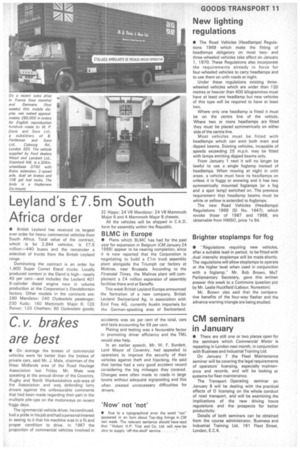New lighting regulations
Page 13

If you've noticed an error in this article please click here to report it so we can fix it.
• The Road Vehicles (Headlamps) Regulations 1969 which make the fitting of headlamps obligatory on most twoand three-wheeled vehicles take effect on January 1, 1970, These Regulations also incorporate the requirements already in force for four-wheeled vehicles to carry headlamps and to use them on unlit roads at night.
Under these regulations existing threewheeled vehicles which are wider than 130 metres or heavier than 400 kilogrammes must have at least one headlamp but new vehicles of this type will be required to have at least two.
Where only one headlamp is fitted it must be on the centre line of the vehicle. Where two or more headlamps are fitted they must be placed symmetrically on either side of the centre line.
Most vehicles must be fitted with headlamps which can emit both main and dipped beams. Existing vehicles, incapable of speeds exceeding 25 m.p.h. may be fitted with lamps emitting dipped beams only.
From January 1 next it will no longer be lawful to use a single foglamp instead of headlamps. When moving at night in unlit areas, a vehicle must have its headlamps on unless it is foggy or snowing and it has two symmetrically mounted foglamns for a fog and a spot lamp) switched on. The previous requirement that headlamp beams must be white or yellow is extended to foglamps.
The new Road Vehicles (Headlamps) Regulations 1969 (Si No. 1647), which revoke those of 1967 and 1968, are obtainable from HMSO, price is 9d.












































































